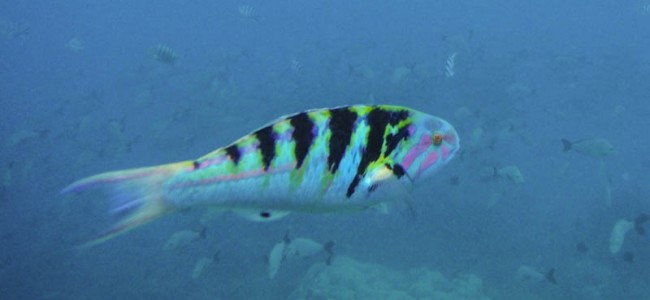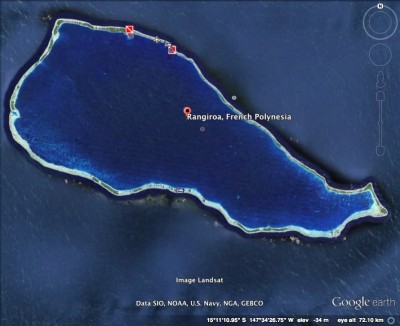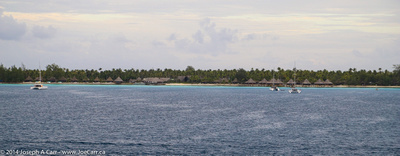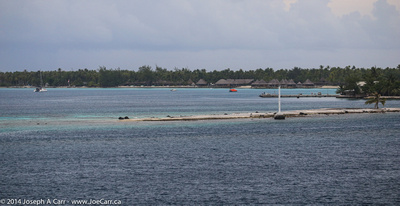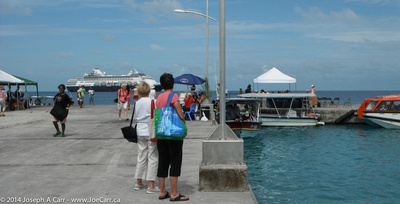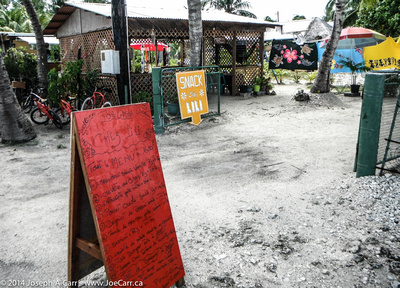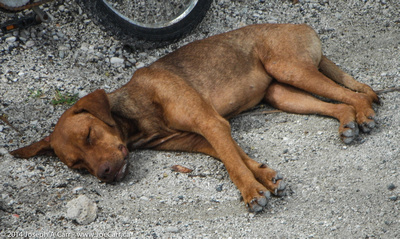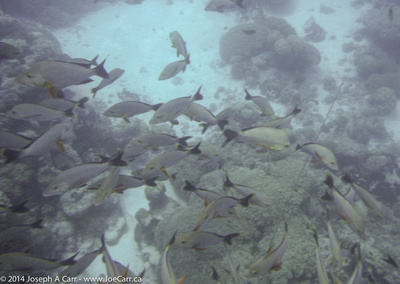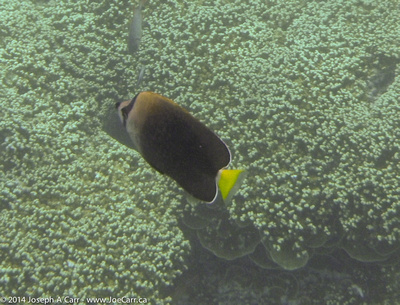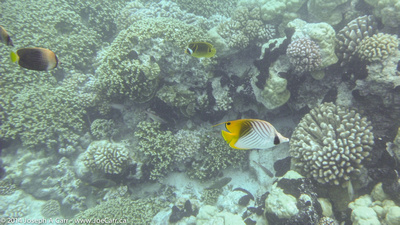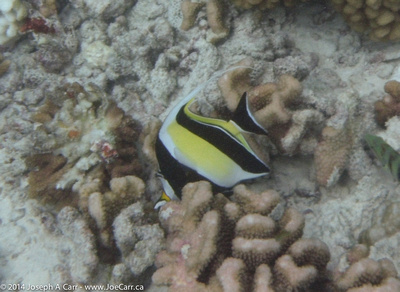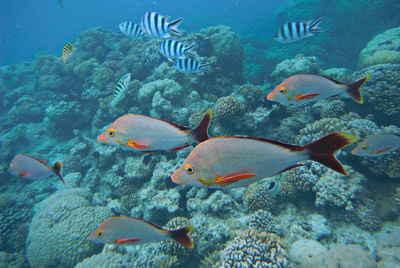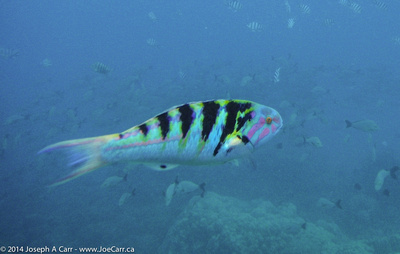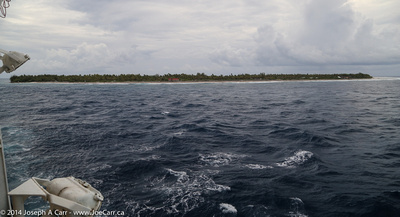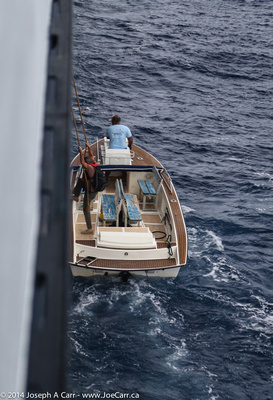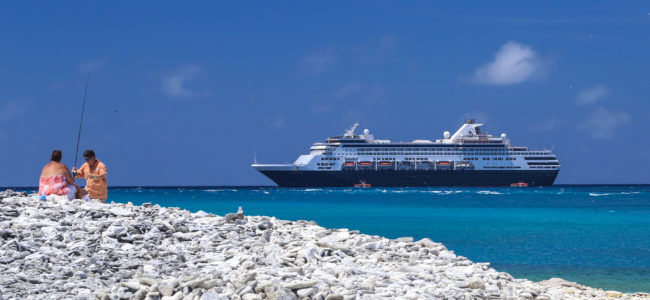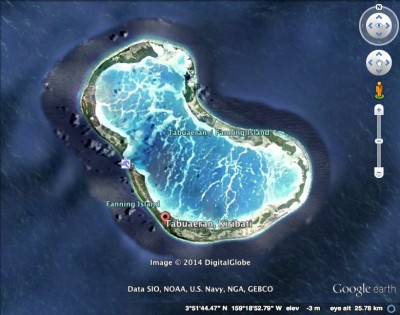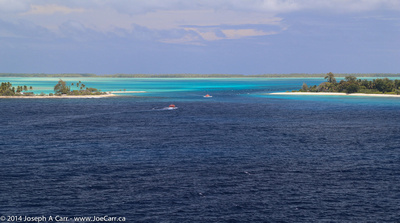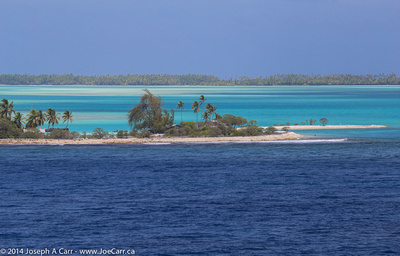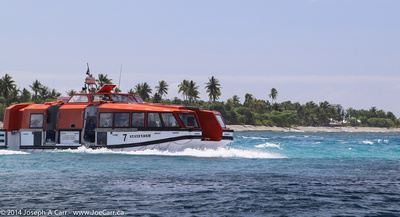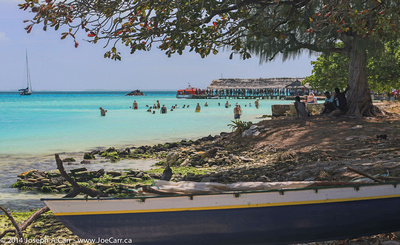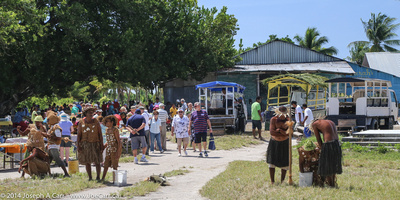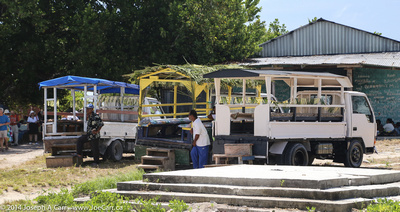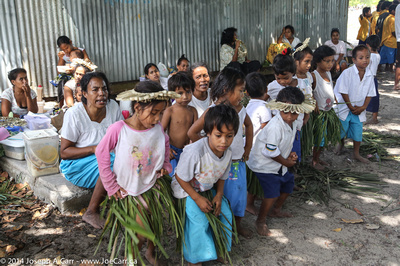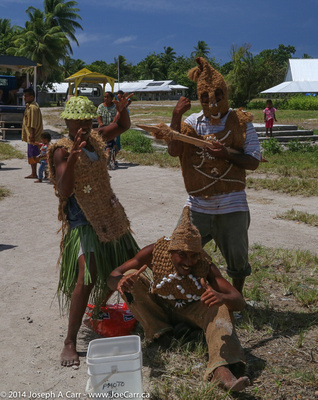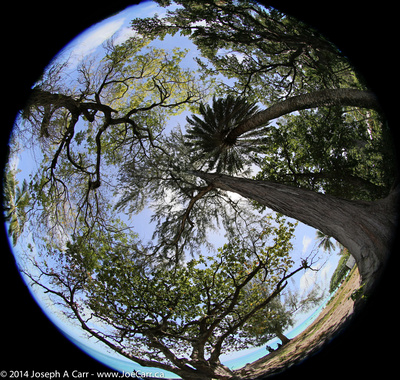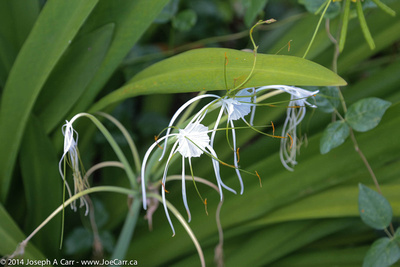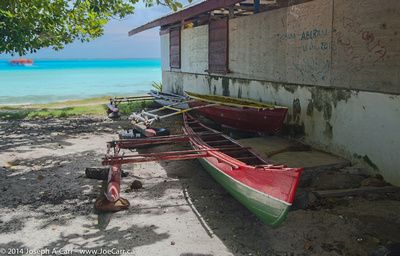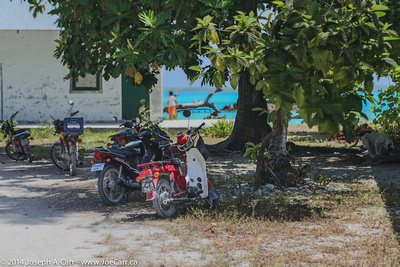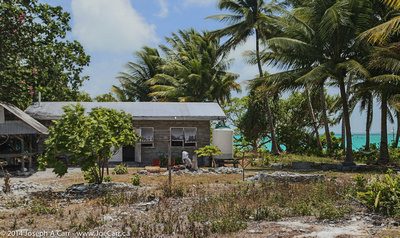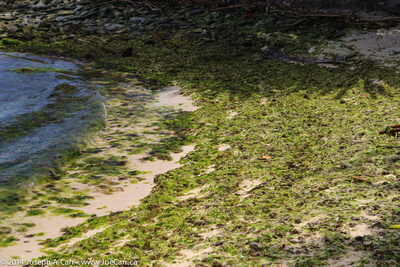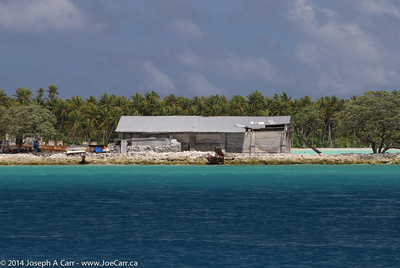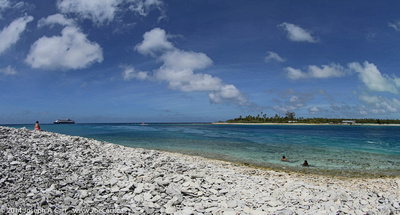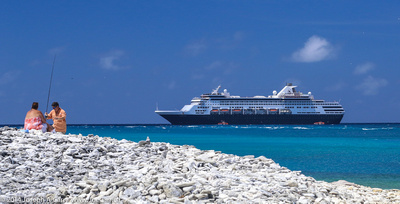2014 Hawai’i-French Polynesia cruise
March 7, 2014 – Friday – Rangiroa, Tuamotu Group, French Polynesia
The ship arrives at Rangiroa before 7AM, and enters this atoll’s lagoon. Like Fanning Island, this atoll is remote, but unlike Fanning, the entrance to the Rangiroa atoll is sufficiently deep to allow ships to enter the sheltered lagoon through a proper navigation channel. Tendering to the little town of Avatoru is easy in these calm waters.
The snorkelling on the one-hour excursion to the little islet in the lagoon is wonderful. The water is clear and about five metres deep, and there are lots of fish, despite the same location being used by a half dozen boats. There are some sharks swimming along the bottom. The coral is in good shape, and there is no current where we are snorkelling. This is my last opportunity to snorkel on this cruise, and it is probably the best experience of them all.
Although we have clear skies while I’m snorkelling, the clouds soon gather in the afternoon, so it is grey but warm at 29℃ and 72% humidity. Although the islanders have power and communications, they must collect rainwater for drinking and washing. Our snorkelling guide tells us they had four days of rain before our ship arrived, which they are very happy about.
I grab a late lunch in the Lido and take it down to the Ocean View pool, a deck lower on the stern. As I eat and sip a Beck’s beer in the shade, I gaze at the view inside the lagoon and soak in the heat of the day. This is what cruising is all about!
We leave Rangiroa promptly at 5PM, and clear the narrow channel out into the open ocean by 5:30PM. The pilot departs, and we are on our way to Nuku Hiva in the Marquesas group. We have a day at sea before we arrive, since the Marquesas are a considerable distance away.
